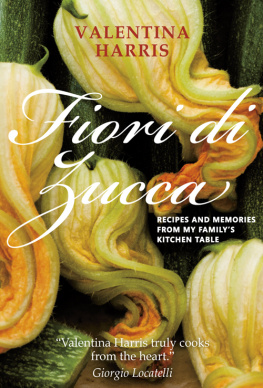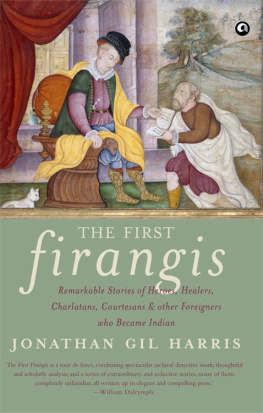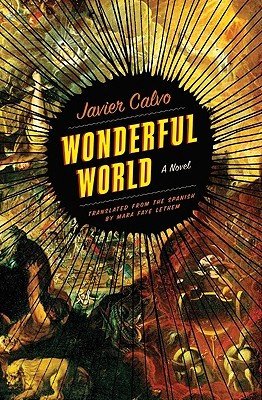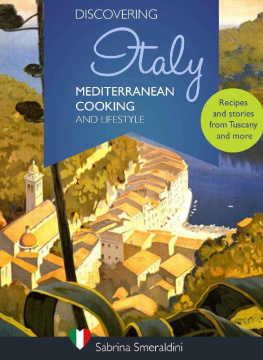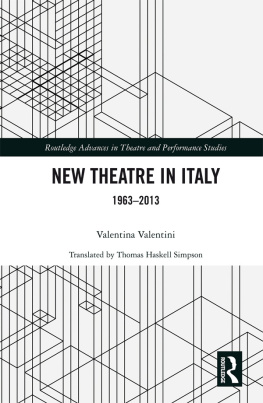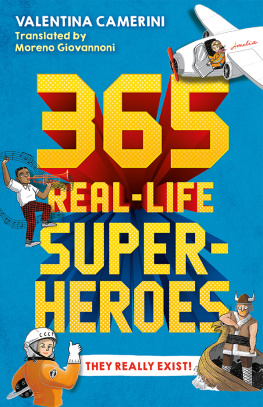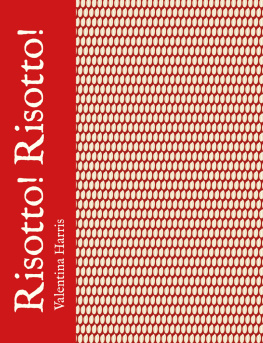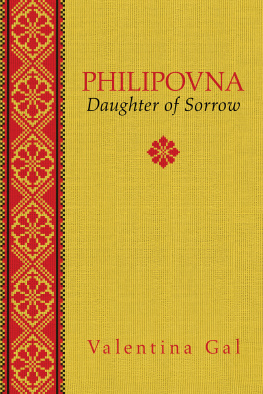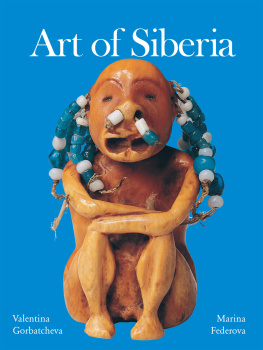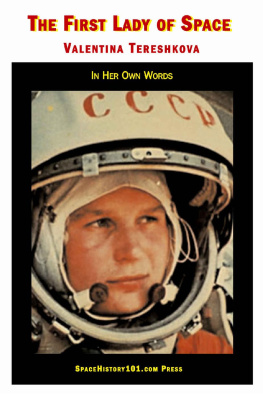
TWENTY STORIES, EIGHTY-FIVE RECIPES FROM TEN COUNTRIES

Me, aged 3, at La Tambura.
INTRODUCTION
Over the past 30 years, I have made my living as an Italian food expert, writer, teacher and chef. When I speak, however, I dont sound remotely Italian. The accent is missing, but nevertheless Italy and Italian cooking remain firmly in my heart. If it is true that you can only really become acquainted with a place through your taste buds, then it is Italy that I have got to know best in the course of my life.
I have wanted to write this book for a very long time. It is a collection of my familys stories dating back to the 15th century, all connected to family recipes. Some of the stories and recipes in this book originate from Rome, some from Tuscany, while others come from such far-flung places as Russia, Serbia, Belgium, Turkey, Paris, Provence, Morocco, China and America. Every ingredient used in these recipes has made me who I am, both as a cook and as a person.
I am the youngest daughter of an Anglo/Irish Dutchman and an Italian/Belgian mother. Born in Peking in 1914, my mothers lineage as a noblewoman of the Italian Sforza dynasty and distant cousin to the Belgian royal family made her very blue-blooded indeed. But this was sprinkled with a hint of exoticism through some Russian blood.
My fine, upstanding English army officer father met my lovely, elegant Italian countess mother in Italy at the end of World War II, and they fell madly, deeply and inextricably in love. They settled in Italy, and my father gave up his English life and family for the love of my mother. Their union, which scandalized Italian society because my father was divorced and not a Roman Catholic, effectively brought my Italian grandfathers impressive political career to an end.
By the time I was seven or so, Dad realized there was not a lot about my three older brothers or me that was obviously English. Growing up in Italy, with only brief periods spent living in England, we seemed to have little understanding of the principle of the stiff upper lip, refused to comprehend the rules of cricket, could never speak without waving our hands and wore our over-emotional, sensitive hearts firmly on our sleeves! Dad decided that it was his duty to instil in us something unmistakably English, and set about teaching us to sound as English as possible (hence the lack of an Italian accent), with the aid of the BBC World Service and his beloved shortwave radio. It worked perfectly. I sound like an English BBC Radio 4 presenter, while feeling in my heart and soul that I am Italian. I dream, work out my problems, curse, kiss and always cook in Italian, even if I am making a curry!
Central to many of my stories and recipes in this book is a very special house in Tuscany that will always be home to me. Although, sadly, it is no longer mine to own, within the pages of this book it remains forever mine to love. The house is called La Tambura. It was also home to our caretaker, Beppino, the man who not only taught me how to cook but also gave me the understanding of how food is grown and produced. Without Beppino, I would never have chosen to make a living out of cooking or writing, teaching and presenting about food.
Most of my early life the period that is covered in these stories was spent between the village of Ronchi on the northern Tuscan coast where La Tambura is located, and the luscious, exuberant city of Rome. My parents, Howard and Fiammetta, lived permanently in Tuscany in their later years, but before that we spent only holidays and long weekends at the house, often joined by other family members and friends of all ages and nationalities. There never seemed to be fewer than 20 people around the table at any meal at La Tambura.
Many of these stories are the same ones that I was told during those family mealtimes, stories that I have retold many times subsequently. Now they are in print for the very first time. It is with great pride and joy that I share the stories and the food of my life, and hope very much that you will take pleasure from these pages as you read my memoir and try my recipes.

Clockwise from top, Il Duca Francesco Sforza; my Nonno Carlo (pictured right) with a great uncle; and my great grandmother.
1. A STORY OF FAMILY FOLKLORE: HOW THE Sforzas FOUGHT FOR MILAN
This is a tale about my mother Fiammettas ancestors, the Sforzas. It is a story my father would regale us with at the dinner table at our Tuscan home, La Tambura. That long, long table was always laid with a beautiful, spotlessly clean and very colourful tablecloth. We had matching napkins, each one in its special napkin ring so that we could always identify our own. There would be a bright bowl of zinnias from the garden, our lovely caramel-coloured china, shiny octagonal tumblers with a dark blue rim for water and wine, and the heavy, well-worn family silver, complete with the Sforza family crest. Dad would only tell the story when he was feeling particularly flirtatious towards my mother, his brown eyes flashing, laughter rumbling in his chest. She would smile back in that enigmatic way she saved only for him.
I am almost certain that this tale of the Sforzas is one of those that, over time, has absorbed elements of other stories. Its location and cast of characters may well have been changed at the whim of more than one narrator to make the tale more dramatic and engaging. I do know, however, that these characters existed, and that I am related to them albeit distantly. And, although I cannot vouch for its historical accuracy, I love retelling the tale. I believe that insisting on the absolute truth from ones best memories sometimes only serves to steal away part of their enjoyment.
The story is set in the 15th century during a battle between the Sforzas and a second Milanese noble family. It was at the time of Ludovico Sforza, Duke of Milan, a man who, like all the Sforzas, governed by force and power-politics. My mothers ancestors were warriors not bankers, like many of their contemporaries, such as the Medici.
My mothers ancestors were warriors not bankers, like many of their contemporaries, such as the Medici.
It was during this especially bloody battle, in which the familys castle was besieged, that one of the noble Sforza ladies appeared on the ramparts. Covered in filth and with wild hair, she brandished her sword and, eyes flashing with hatred, she stood glaring down at the enemy. From below, the leader called out to her, Desist madam. Give up now or we shall be forced to take your children! In reply, she waved her skirts at the soldiers, shouting lewdly, Never mind! Go ahead if you want to, therell be plenty more before you know it!
Later, after a truce had been agreed, a banquet was held in the great hall of the Castello Sforzesco (which can still be visited in Milan today and even has its own Metro station). As the guests sat down to roasted haunch of wild boar, wood pigeon and other fine dishes, they had no idea what their hosts had in store for them. They were satisfied that good manners and noble protocol were being observed, but they should have been on their guard: the Sforzas were infamously treacherous. (At this point in the story my father would give my mother a funny look, smoothing his thumb over the engraved family crest on his knife handle a rampant lion holding the branch of a quince tree.) As soon as the guests had raised their goblets in a toast, a group of crack assassins, whom the Duke had hidden behind the tapestries in the banqueting hall, leapt out and dragged the guests away to face a grisly end. The rest of the party continued with the feast, calmly, as if nothing had happened.

